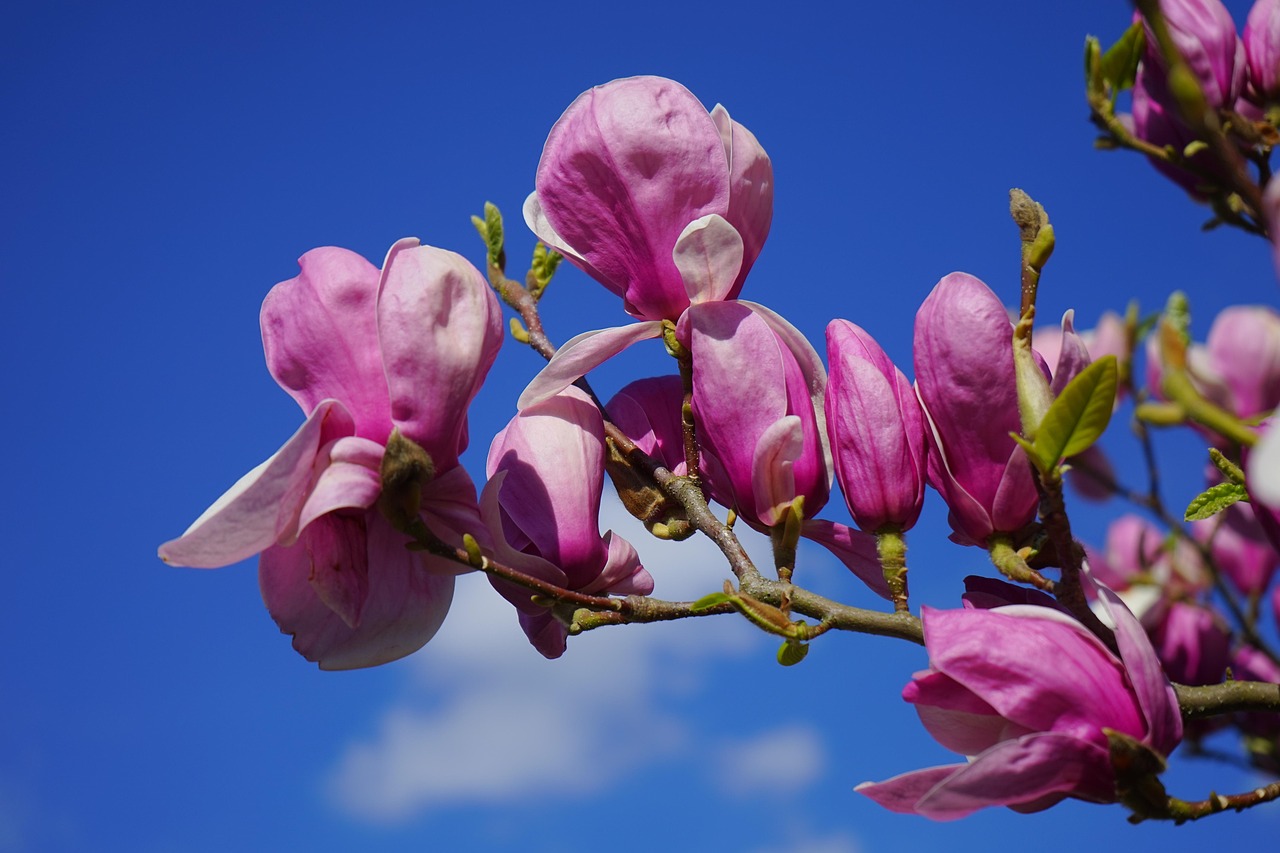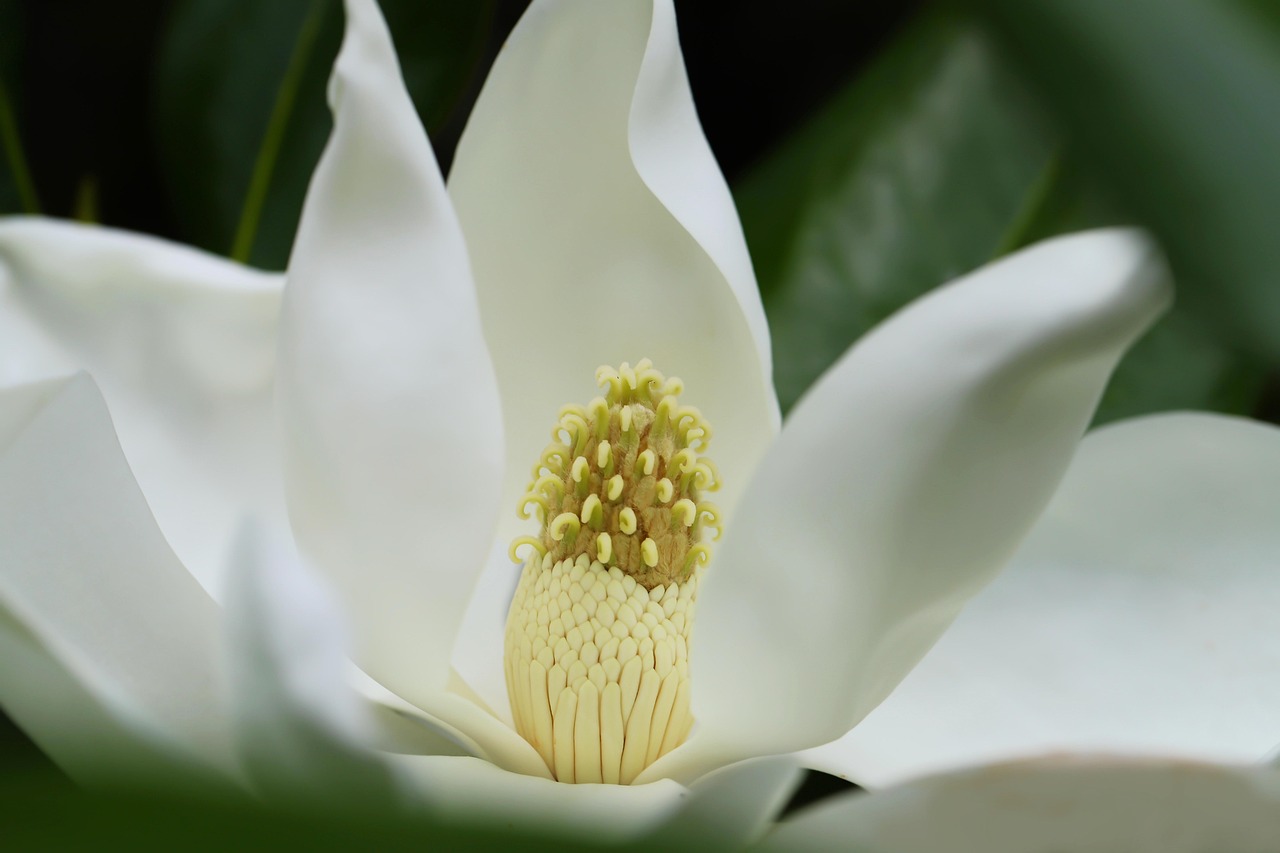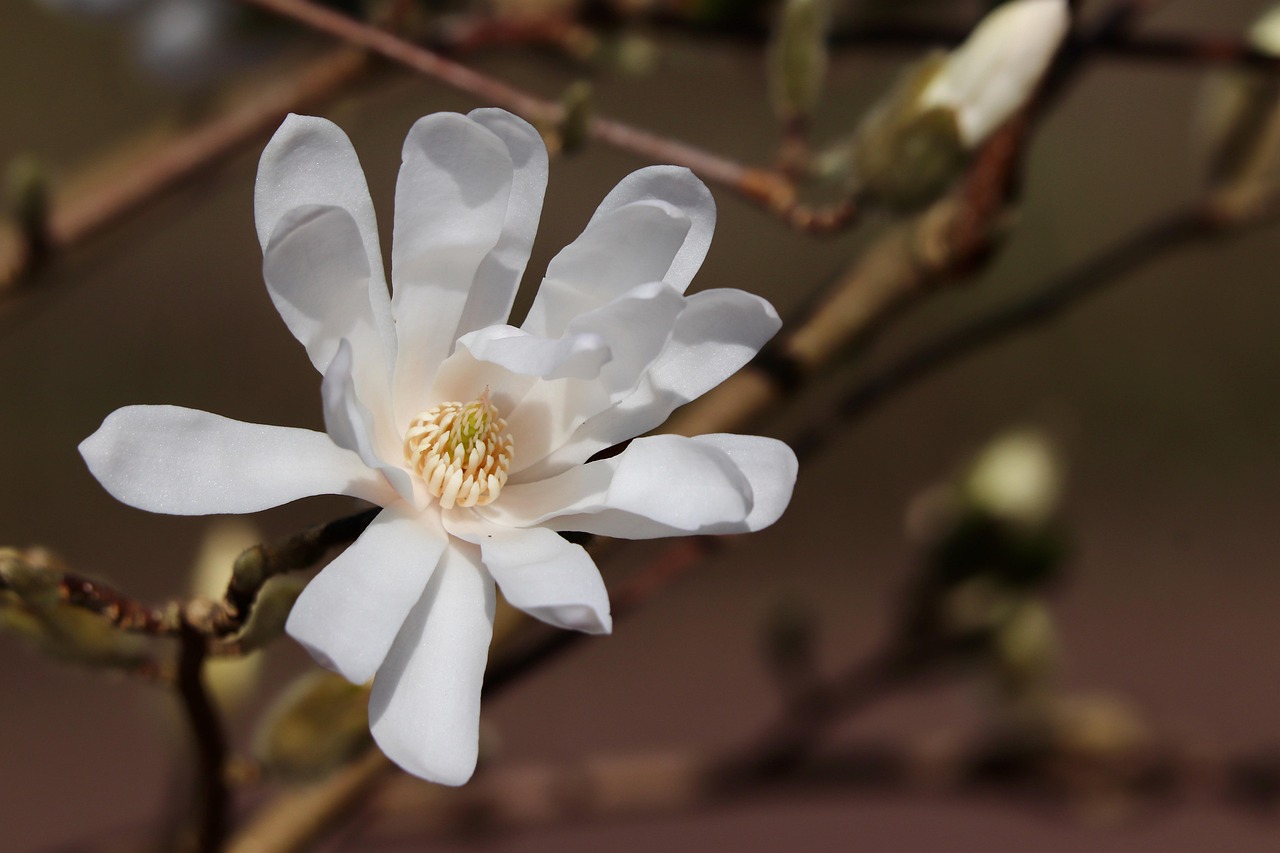Magnolia tree roots are generally considered safe and non-invasive. They tend to grow relatively shallow and spread outward, which minimizes the risk of damage to structures or underground utilities.
Understanding Magnolia Trees
Magnolia trees are beloved for their stunning flowers and aromatic scents. They belong to the Magnoliaceae family, with hundreds of species found around the world. These trees are native to both North America and Asia, with varying sizes and growth habits. Some magnolias are large trees, while others are smaller shrubs. Their beautiful blossoms often signal the arrival of spring, making them popular choices in gardens and landscaping.

When planting a magnolia tree, it is essential to consider its root system. While many trees develop extensive root networks that can cause problems for nearby structures, magnolia roots typically remain superficial. This characteristic makes them suitable for urban environments where space is limited.
Root Structure of Magnolia Trees
The root system of magnolia trees is primarily fibrous, featuring numerous thin roots that spread horizontally rather than delving deep into the soil. This structure provides several benefits:
- Stability: The fibrous roots help anchor the tree in place, reducing the chance of uprooting during storms.
- Moisture Absorption: Shallow roots are effective at absorbing water from the upper soil layers, which is beneficial in regions with heavy rainfall.
- Nutrient Uptake: These roots can efficiently access nutrients that are available in the topsoil.
Are Magnolia Roots Invasive?
Invasive roots can pose problems for homeowners, as they may damage sidewalks, driveways, and foundations. However, magnolia roots typically do not exhibit this invasive behavior. Instead, their growth pattern tends to be non-aggressive, making them a safe choice for residential areas.

Several factors contribute to the non-invasive nature of magnolia roots:
- Growth Habit: Magnolia trees generally have a broad, rounded canopy, which matches their expansive but shallow root system.
- Root Competition: They can compete well with other plants for nutrients and water without overtaking them.
- Soil Conditions: Magnolias prefer well-drained soils, which influences their root growth and limits the potential for invasive behavior.
Comparing Magnolia Roots to Other Tree Roots
To better understand how magnolia roots compare to those of other common trees, the following table highlights key differences in root behavior:
| Tree Type | Root Depth | Invasiveness | Ideal Soil Type |
|---|---|---|---|
| Magnolia | Shallow (1-3 feet) | Non-invasive | Well-drained |
| Oak | Deep (3-6 feet) | Moderately invasive | Diverse |
| Maple | Moderate (2-4 feet) | Potentially invasive | Moist, well-drained |
| Pine | Deep (3-5 feet) | Moderately invasive | Sandy or acidic |
This comparison shows that magnolia roots are less likely to cause issues compared to other tree species. Their shallow growth and non-invasive nature make them suitable for various landscaping projects.

In addition to their manageable root systems, magnolias offer other advantages such as beautiful foliage and flowers. These traits contribute to their popularity among gardeners and landscapers alike. Understanding the characteristics of magnolia roots can help homeowners make informed decisions about planting them on their properties.
The overall safety and non-invasive qualities of magnolia tree roots position them as an excellent choice for those looking to enhance their landscapes without the worry of structural damage.
Common Species of Magnolia Trees
Magnolia trees come in various species, each offering unique characteristics and adaptations. Some of the most common species include:

- Southern Magnolia (Magnolia grandiflora): Known for its large, fragrant white flowers and glossy green leaves. It can grow up to 80 feet tall.
- Star Magnolia (Magnolia stellata): A smaller species, typically growing to 15-20 feet, it features star-shaped white flowers in early spring.
- Saucer Magnolia (Magnolia x soulangeana): A hybrid variety that showcases large, pink and white flowers. It usually reaches heights of 20-30 feet.
- Cucumber Tree (Magnolia acuminata): This species can grow up to 100 feet tall and produces yellow-green flowers. It is often found in mixed forests.
Root Behavior Under Different Conditions
The behavior of magnolia roots can vary based on environmental factors. Understanding these factors can help homeowners and gardeners create the best conditions for magnolia trees.
Soil Type
Magnolias thrive in well-drained, loamy soil. However, they can adapt to various soil types. Key points about soil types include:
- Clay Soil: While magnolias can tolerate clay soil, it is crucial to ensure good drainage to prevent root rot.
- Sandy Soil: This type allows for excellent drainage but may require additional organic matter to retain moisture.
- Acidic Soil: Magnolias prefer slightly acidic conditions, benefiting from mulch with pine needles or compost to maintain pH levels.
Water Availability
Water availability significantly influences magnolia root growth. These trees have moderate water needs and prefer consistent moisture. Factors to consider include:
- Frequency of Watering: Newly planted magnolias should be watered regularly until established, typically within the first two years.
- Drought Conditions: During dry spells, magnolia roots may extend deeper in search of water, but prolonged drought can stress the tree.
- Flooding: Excessive standing water can damage the roots. Ensure proper drainage in areas prone to flooding.
Maintenance Tips for Healthy Magnolia Trees
Proper maintenance can enhance the health and vitality of magnolia trees. Here are some essential care tips:
Mulching
Applying mulch around the base of magnolias helps retain moisture and regulate soil temperature. It also suppresses weed growth. Recommended materials include:
- Bark chips
- Pine needles
- Shredded leaves
Pruning
Pruning is important for maintaining shape and health. Consider the following when pruning magnolias:
- Timing: The best time to prune is late winter or early spring before new growth begins.
- Technique: Remove dead or damaged branches and thin out crowded areas to improve air circulation.
- Avoid Over-Pruning: Magnolias do not respond well to heavy pruning; aim for light maintenance instead.
Pest and Disease Management
While magnolias are generally resilient, they can fall victim to certain pests and diseases. Common issues include:
- Aphids: These small insects suck sap from leaves, leading to wilting. Control them with insecticidal soap or neem oil.
- Scale Insects: These pests appear as small bumps on stems and leaves. They can be controlled with horticultural oil.
- Crown Gall: A bacterial disease that causes galls on roots and stems. Remove infected plants to prevent spread.
The Ecological Importance of Magnolia Trees
Magnolia trees play a vital role in their ecosystems. They provide numerous ecological benefits, including:
- Habitat Creation: Magnolias offer shelter and food for various wildlife species, including birds and insects.
- Erosion Control: Their root systems help stabilize soil and prevent erosion on slopes and riverbanks.
- Aesthetic Value: The beautiful blooms enhance landscape beauty, attracting pollinators like bees and butterflies.
The ecological contributions of magnolia trees further emphasize their value in landscaping and conservation efforts.
Planting Magnolia Trees
Planting magnolia trees requires careful consideration to ensure their healthy growth and development. Understanding the best practices for planting can lead to successful establishment in any landscape.
Choosing the Right Location
Finding an appropriate location for magnolia trees is crucial. Consider the following factors:
- Sunlight: Magnolias prefer full sun to partial shade. They thrive best in areas that receive at least six hours of sunlight daily.
- Space: Ensure there is enough space for the tree to grow to its full size. This includes both height and width, as some species can expand significantly.
- Drainage: Choose a site with well-draining soil to prevent waterlogging, which can harm the roots.
Preparing the Soil
Soil preparation is essential for promoting healthy root growth. Here are steps to prepare the soil:
- Test the soil pH using a soil test kit. Aim for a slightly acidic range between 5.5 and 6.5.
- Amend the soil with organic matter, such as compost or well-rotted manure, to improve its structure and fertility.
- Till the soil to a depth of at least 12 inches to ensure good aeration and drainage.
Planting Techniques
Proper planting techniques will help magnolia trees establish themselves effectively. Follow these steps:
- Digging the Hole: The planting hole should be twice as wide as the root ball but not deeper than the root ball itself.
- Positioning the Tree: Place the tree in the hole, ensuring that the top of the root ball is level with or slightly above ground level.
- Backfilling: Fill in around the root ball with soil, tamping it gently to remove air pockets but avoiding compacting the soil too tightly.
Caring for Newly Planted Magnolias
The first couple of years after planting are critical for magnolia trees. Proper care during this time can significantly enhance their growth and stability.
Watering
Consistent watering is vital for newly planted magnolias. Consider these guidelines:
- Frequency: Water deeply once a week, especially during dry periods, to encourage deep root growth.
- Avoid Overwatering: Ensure that the soil remains moist but not soggy, as excessive water can lead to root rot.
Fertilizing
Fertilization helps support healthy growth, especially in newly planted trees. Follow these recommendations:
- Type of Fertilizer: Use a slow-release fertilizer designed for trees and shrubs, preferably one with an N-P-K ratio of 10-10-10 or similar.
- Timing: Apply fertilizer in early spring, just before new growth begins, and follow package instructions for dosage.
Pest and Disease Monitoring
Regular monitoring of pests and diseases will help protect your magnolia tree. Here are some tips:
- Visual Inspections: Check leaves and stems weekly for signs of pests such as aphids or scale insects.
- Disease Signs: Look for unusual leaf coloration or wilting, which may indicate issues like crown gall or fungal infections.
Popular Uses of Magnolia Trees in Landscaping
Magnolia trees serve various purposes in landscaping due to their beauty and adaptability. Here are some popular uses:
Ornamental Planting
The stunning flowers and foliage of magnolia trees make them highly desirable as ornamental plants. They can be used in different landscape designs:
- Sole Specimen Trees: Planting a magnolia as a focal point in gardens adds interest and beauty.
- Tree Rows: Create a stunning row of magnolias along driveways or property boundaries for visual appeal.
Shade Providers
Magnolias offer ample shade due to their broad canopies, making them suitable for:
- Patio Areas: Planting magnolias near patios provides a cool retreat during hot summer days.
- Parks and Public Spaces: Their shade is beneficial in parks where visitors seek relief from the sun.
Wildlife Gardens
Integrating magnolias into wildlife gardens can attract various species. Some benefits include:
- Nectar Source: The flowers attract pollinators like bees and butterflies, supporting local ecosystems.
- Shelter: Birds and small mammals find shelter in the dense foliage, promoting biodiversity.
The versatility of magnolia trees makes them an excellent addition to diverse landscaping projects. Their beauty, ecological benefits, and adaptability contribute significantly to enhancing outdoor spaces.
Environmental Benefits of Magnolia Trees
Beyond their aesthetic appeal, magnolia trees contribute significantly to the environment. They offer several environmental benefits that are crucial for maintaining healthy ecosystems. Here are some key aspects:
- Air Quality Improvement: Magnolias improve air quality by absorbing carbon dioxide and releasing oxygen. Their large leaves also capture dust and pollutants.
- Climate Regulation: The shade provided by magnolia trees helps moderate local temperatures, contributing to urban heat mitigation.
- Soil Health: The root systems of magnolias help prevent soil erosion and enhance soil structure, promoting healthier ground conditions for surrounding plants.
Challenges in Growing Magnolia Trees
While magnolia trees have many advantages, they are not without challenges. Understanding these potential issues can help gardeners and landscapers make informed decisions:
Susceptibility to Weather Conditions
Magnolias can be sensitive to extreme weather conditions. Consider the following:
- Frost Sensitivity: Early blooming species may suffer damage from late frosts, which can kill flower buds.
- Strong Winds: The broad canopies can catch strong winds, making them susceptible to breakage or uprooting.
Pests and Diseases
Although magnolias are generally hardy, they can still be affected by specific pests and diseases. Regular monitoring and proactive care are essential:
- Leaf Spot Disease: Caused by fungal infections, this condition can lead to premature leaf drop. Proper spacing for air circulation can help mitigate this issue.
- Magnolia Scale: This pest can weaken trees by sucking sap. It is crucial to manage scale infestations promptly to ensure tree health.
Cultural Significance of Magnolia Trees
Magnolia trees hold cultural significance in various regions around the world. They are often symbols of beauty, nobility, and perseverance. Some notable points include:
- Symbolism: In many cultures, magnolias represent dignity and a love of nature. Their elegant blooms are often used in art and literature.
- Historical Context: In the Southern United States, magnolias symbolize hospitality and grace, making them popular in gardens and public spaces.
- Cultural Festivals: Some regions celebrate magnolia blossoms with festivals that highlight local heritage and community pride.
Final Thoughts
Magnolia trees are a beautiful and versatile addition to any landscape. Their non-invasive root systems make them suitable for urban and suburban settings without the worry of damaging infrastructure. The ecological benefits they provide, such as improving air quality and supporting wildlife, further enhance their value in gardening and landscaping.
Understanding the needs of magnolia trees—such as soil conditions, water requirements, and pest management—can lead to successful growth and flourishing specimens. While they may come with some challenges, including susceptibility to weather extremes and pests, proper care can mitigate these issues effectively.
The cultural significance of magnolias adds another layer of appreciation for these magnificent trees. They not only beautify landscapes but also enrich our environment and culture. In conclusion, magnolia trees represent a harmonious blend of aesthetic appeal, ecological benefit, and cultural richness, making them an excellent choice for any garden or landscape project.
